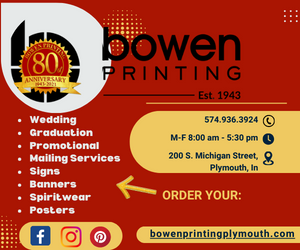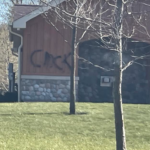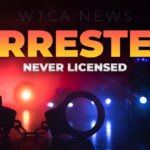A mystery at The REES came to light early in 2019 during the de-construction efforts to strip away layers of modernization to the theater’s interior.
 After removing the red draping material on the side walls that was installed in the early 80’s, the acoustical sound board material that made up the art deco look of the interior installed in the early days of 1940 was revealed. As history was peeled back even more, the original plaster walls from the Civil War days of 1865 were still very much intact, some indicating the paint colors of the upstairs rooms during the ensuing years. There it was – revealed for the first time in 80 years – the hand scribed initials, R.A.Q. dated December 28, 1939, just weeks before the opening of the new Rees Theatre on February 2, 1940.
After removing the red draping material on the side walls that was installed in the early 80’s, the acoustical sound board material that made up the art deco look of the interior installed in the early days of 1940 was revealed. As history was peeled back even more, the original plaster walls from the Civil War days of 1865 were still very much intact, some indicating the paint colors of the upstairs rooms during the ensuing years. There it was – revealed for the first time in 80 years – the hand scribed initials, R.A.Q. dated December 28, 1939, just weeks before the opening of the new Rees Theatre on February 2, 1940.
 It all began innocently enough as through the ages it was common practice for tradesmen and artisans to sign their accomplishments for posterity. Many of these would never be seen again. Some are revealed only briefly when their labors are destroyed, when buildings are razed for one reason or another. Seeing these initials now on nearly a daily basis, had brought intrigue to this writer of just who pulled a thick carpenter’s pencil from his pocket on a cold winter day and inscribed this wall. Well, “inquiring minds want to know”!
It all began innocently enough as through the ages it was common practice for tradesmen and artisans to sign their accomplishments for posterity. Many of these would never be seen again. Some are revealed only briefly when their labors are destroyed, when buildings are razed for one reason or another. Seeing these initials now on nearly a daily basis, had brought intrigue to this writer of just who pulled a thick carpenter’s pencil from his pocket on a cold winter day and inscribed this wall. Well, “inquiring minds want to know”!
 We knew that early in 1939 Stewart and Opal Rees hired local architect Alves O’Keefe to fast track their purchase of the VanVactor Building into a cinema attraction to rival all others. In July the blueprints were ready and the Badgley Construction Co. was selected to implement them with a given timeline of seven months and a budget of $75,000. The initials were found inscribed on the long north wall of the auditorium about 12 feet off of the sloped floor in a location that was near a large art deco light feature, a carpenter or an electrician maybe.
We knew that early in 1939 Stewart and Opal Rees hired local architect Alves O’Keefe to fast track their purchase of the VanVactor Building into a cinema attraction to rival all others. In July the blueprints were ready and the Badgley Construction Co. was selected to implement them with a given timeline of seven months and a budget of $75,000. The initials were found inscribed on the long north wall of the auditorium about 12 feet off of the sloped floor in a location that was near a large art deco light feature, a carpenter or an electrician maybe.
 Surely it would not be that hard to identify this individual, after all this is the 21st century and we have the internet. It would sure be odd to find that these initials might belong to an ancestor of Cassi Quissell, a member of The REES Project Committee. Personally, I was nearly certain we would find it to be a member of the Quivey family with a long presence in Marshall County. I planned to research this at the funeral home, either through death records or shelves of old Plymouth city directories. To my surprise there was no Quivey or Quissell that matched. This would take some further sleuthing. A great resource today is findagrave.com. However, again no Quivey matched those initials but a “Q” only search in Marshall County, Indiana found one; Russell Abraham Quillen, a WWI veteran who met the age criteria, died on April 29, 1974 and was buried in Oak Hill Cemetery, Plymouth. But just who was he?
Surely it would not be that hard to identify this individual, after all this is the 21st century and we have the internet. It would sure be odd to find that these initials might belong to an ancestor of Cassi Quissell, a member of The REES Project Committee. Personally, I was nearly certain we would find it to be a member of the Quivey family with a long presence in Marshall County. I planned to research this at the funeral home, either through death records or shelves of old Plymouth city directories. To my surprise there was no Quivey or Quissell that matched. This would take some further sleuthing. A great resource today is findagrave.com. However, again no Quivey matched those initials but a “Q” only search in Marshall County, Indiana found one; Russell Abraham Quillen, a WWI veteran who met the age criteria, died on April 29, 1974 and was buried in Oak Hill Cemetery, Plymouth. But just who was he?
For more information, I turned to Jill Montgomery, the wife of Brian, another committee member. Jill is a Master Gardener who has written numerous articles on community gardens throughout the region. For her research she has access to all national newspaper archives. In short order, she provided his obituaries from both the Plymouth Pilot News and South Bend Tribune. There it was: He was a union electrician and father of Mrs. Patrick (Betty) Langdon. I was quite familiar with the Langdon Family whose daughter is Patty Johnson and sons James and John “JJ”, a classmate of mine. One text to Patty and it was confirmed, along with her return of a 40’s era photo and there, in his front pocket was a flat lead pencil. Her Grandpa “Russ” was a Union electrician and collector of Indian artifacts, some of his most unique pieces have landed in the continued care of the Marshall County Historical Museum.
The story could end right there but seeing that Russ’s address was 309 N. Center Street, put him a neighbor to the north of Cressner & Company Abstracts at 307 N. Center Street. Morris Cressner had, for many years, occupied the second floor office space at 100 ½ N. Michigan Street and in 1939 was required to relocate his office to make way for the new Rees Cinema. Not to be left out of this irony, I was born in 1954 while my parents Walter and Lucille Danielson, were neighbors to the north at 313 N. Center Street.
Six degrees or It’s a Small World, which by the way, played at The REES in June of 1950, starring Hoosier native Will Greer who later played Zeb in the Walton’s TV series.
A Happy 81st Anniversary to The REES!
(Contributed by Randy Danielson, REES Project Co-chair)
THE FOLLOWING STORY WAS RECEIVED ON SUNDAY, JANUARY 31, 2021
Written by Art Quillen, the grandson of Russell A. Quillen
I don’t know about my father, nor my uncle Ted and the Rees, but
certainly, my brother Michael, and myself also had employment for a stint
at the Rees. From about 1966 to 1968 we both worked there, I as a
projectionist and Mike ran the concession stand. Mr. Weatherhead said he
was taking a chance at hiring me at 16, because I was the youngest, he
had ever put in the projection booth. I recall two other men took turns
with me in the booth as well since such work was part-time by nature and
backups were essential. It worked out and I was there until I went in the
Navy after high school. I think when he hired my brother who was 14 that
he was the youngest hire for that job as well. Running the projectors
included more than just rolling film in the machines – things like
cutting and splicing shorts together (cartoons, news, previews),
swapping the big lenses around (Cinemascope vs wide screen, etc.)
between the shorts and features, writing up the order sheets for the
next weeks and months films, and other tasks. It was a great job to learn
and follow procedures accurately and on time.
One of the tricky bits was managing the old projectors’ carbon arc rods… a
new pair of rods would burn (produce the bright white light source) for
about 2-1/2 reels of 20 minutes each, with enough left to do some short
film, perhaps a news reel or cartoon. But the rods needed to be used up
as they were not inexpensive. So, a projectionist had to gauge how short
a rod could be used and if misjudged, the light could go out before the
reel ran out – a big oops. Mr. Weatherhead usually showed up in the
booth in just a few seconds if the main room went dark.
I enjoyed watching movies as I ran them, and certainly had some
interesting things go wrong in the projection booth. One time I had the
exit side of a filmstrip snap where it was feeding onto the take-up
wheel. I heard the sound as the lower reel started spinning too fast so
I opened the lower cover door to see what was wrong. Film quickly
spilled into a pile on the floor. It seemed like not much was left so I
let it run instead of stopping the show. It ended up filling about a
fourth of the room in a pile of tangled cellulose. No one ever knew
anything went wrong up there, but I just had enough time to get it
cleared up and another reel ready before the other projector’s reel
played out. A standard full reel in those projectors would run 20 minutes.
To this day I’m a popcorn lover and I ate so much popcorn most nights
that Mr. Weatherhead finally said “from now on only your first bag is
free”. The Rees popcorn in my mind has always been my gold standard
and to this day I’ve never yet found an equal. And the movies! I’ve
always loved movies and with that job it was best to watch the whole run
each time just in case something did go wrong. I think I enjoyed every
one of them. In particular I remember running ‘The Sound of Music’ for
two weeks – one of several that had more than the usual 3 or 4 day
stint. I still know those songs by heart all the way through :).
One thing was always for sure. Per Mr. Weatherhead: ‘The show begins, on
the dot, at 7 pm.’ That rule I don’t ever recall breaking… somehow, I
just knew I did not want him visiting the projection booth at 7:01…













